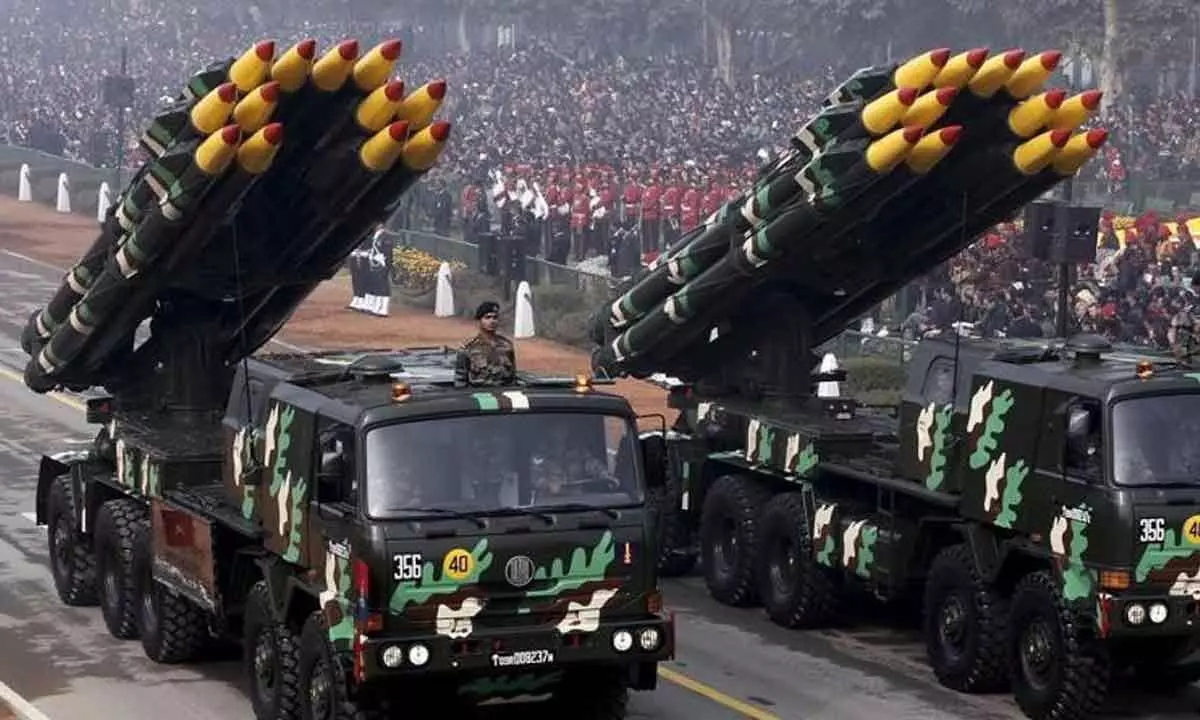Govt focussing on self-reliance in defence production
India’s goal seems to have been to cut its dependence on other countries for defence systems across the board rather than to pivot from one supplier to the other
image for illustrative purpose

The world is fuelled by innovations. Adapting to new dimensions of development is probably what Indian defence does best. Encouraging innovations in the state of warfare is the best possible ears to the ground approach to take to maintain supremacy across your borders. Walk into the future of Indian warfare capabilities.
In the true spirit of adopting new technologies and innovating out of the box, these defence startups, MSMEs and entrepreneurs are trailblazers for their ability to create opportunities.
These defence manufacturers have adopted the role of innovative frontrunners with the larger picture in mind – that of unparalleled defence capabilities for our forces. The driving passion for them all is the need to make a mark in the history of Indian defence.
The report on Arms Production Capabilities in the Indo-Pacific Region, released by the Stockholm International Peace Research Institute (SIPRI) earlier this month, casts some 'serious doubts about whether India will be able to significantly reduce its dependence on imports in the short and medium term.
According to the report, 84.3 per cent of the major conventional arms procured by India in 2016-2020 were of foreign origin, of which licensed production accounted for 57.8 per cent. In a stark contrast, the domestic procurement accounted for a mere 15.7 per cent of the total procurement.
India emerged as the second-largest importer of arms transferred between 2016-20, with a share of 9.5 per cent of global arms imports. Even so, its imports fell 33 per cent from that between 2011-2015. The SIPRI report has attributed this decline to the country's complex procurement procedures and efforts to reduce its dependence on Russian weapons. Correspondingly, Russia has been the worst hit by India's decreased share, although it still ranks as the subcontinent's largest arms supplier, delivering 49 per cent of its total imports, ahead of France (18 per cent) and Israel (13 per cent).
India has cleared weapon purchases worth Rs 28,732 crore, including armed drone swarms, carbines and bullet-proof jackets that will be designed and developed in the country. Surveillance and armed drone swarms feature on a new list of 'Make in India' projects that the army is pursuing in partnership with the defence industry. Drones within a swarm can carry out a wide range of missions, including strikes against tanks, infantry combat vehicles, ammunition holding areas, fuel dumps and terror launch pads.
For 2022-23, India has earmarked Rs 84,598 crore – 68 per cent of the military's capital acquisition budget – for the purchase of locally produced weapons and systems, besides setting aside 25 per cent of the defence research and development (R&D) budget for private industry, startups and academia.
The DAC also approved a navy proposal to procure an indigenously-upgraded 1250 KW-capacity marine gas turbine generator for power generation on board the Kolkata-class of warships, and 14 fast patrol vessels for the Indian Coast Guard with 60 per cent indigenous content.

